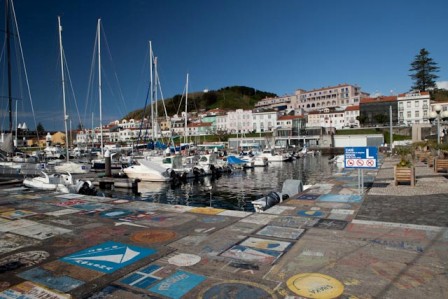The wind has continued to pick up for the last 2 days of our passage to the Azores, which means we have made good time, sailing at about 7-8 knots. We’re slowly getting used to walking, eating and sleeping at a 45 degree angle! We listen to the hydrophone every 15 minutes day and night, and each time we don’t know what to expect; the deep regular clicks of sperm whales, the high frequency whistles of oceanic dolphins, or the rhythmic clicks of pilot whales which sound like a ball bearing being shaken in an aerosol can.
Despite the higher winds, we’ve continued to have some fantastic sightings; frequent bow-riding dolphins, an encounter with a mixed group of common and striped dolphins, a sperm whale breaching in the distance, and a possible sighting of five false killer whales.
After six days at sea, we got our first glimpse of land – the Azorean islands of São Miguel and Santa Maria. We sailed on for another day and night until we reached our destination; the island of Faial, 100nm further west. In the early hours of Easter Sunday we arrived in the port of Horta in the south-east of Faial and were welcomed by a harbour full of yachts of every size, the quayside covered in colourful murals painted by crews arriving here from all over the world.
We have spent the last three days preparing SOTW for the forthcoming research project, stocking up on fuel, water and food, and exploring the island, from the old whaling station to the lookouts used by the vigias to find whales at sea. We also tested the ‘nauti buoys’, a free floating hydrophone buoy which we’ll be using over the next few weeks to record baleen whale vocalisations. We said a sad farewell to Magnus and Miriam , who are heading home and are ready to welcome the next crew and students who will be joining us shortly.
by Alexa.

Sorry, comments are closed for this post.